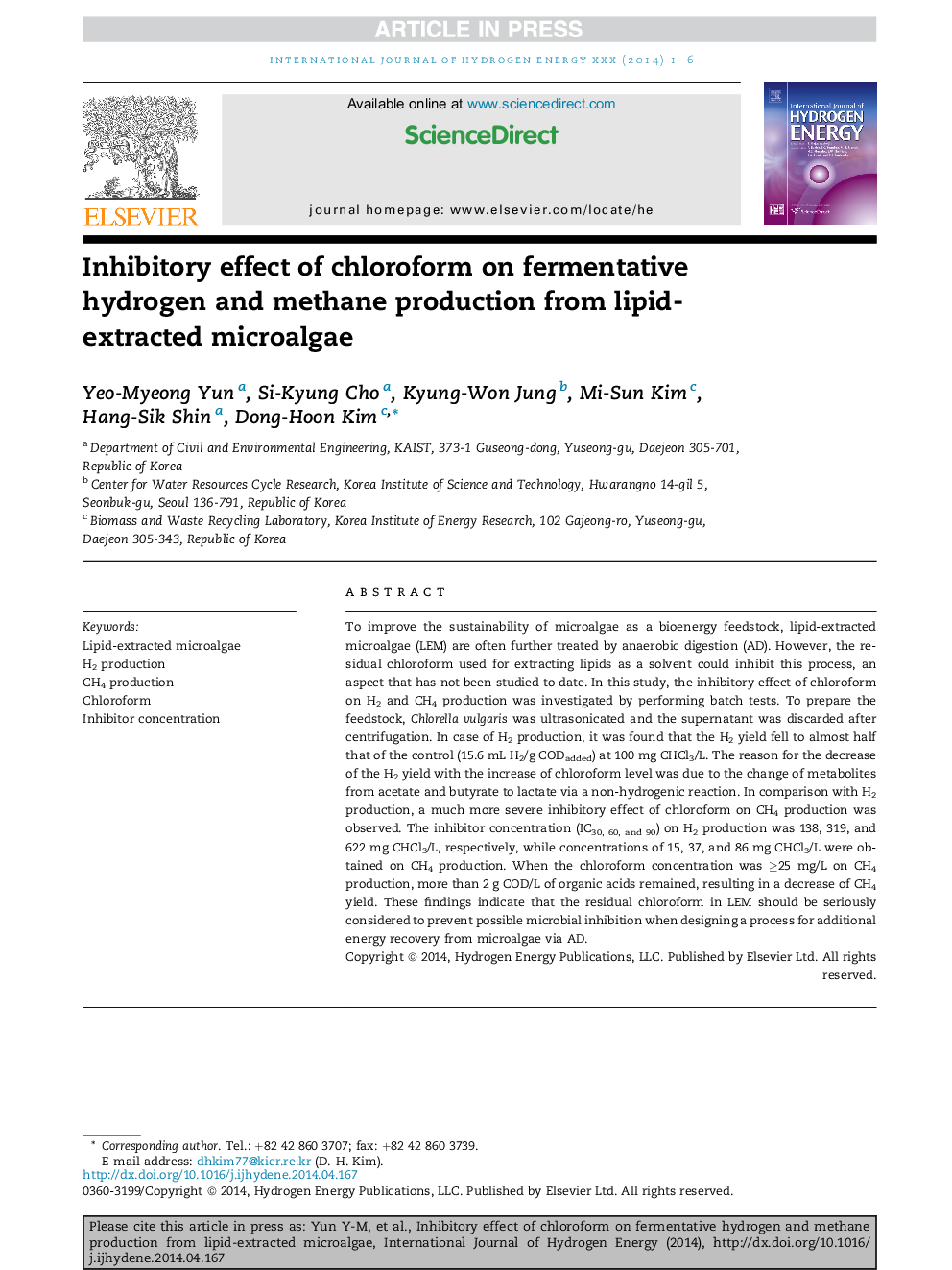| Article ID | Journal | Published Year | Pages | File Type |
|---|---|---|---|---|
| 7717810 | International Journal of Hydrogen Energy | 2014 | 6 Pages |
Abstract
To improve the sustainability of microalgae as a bioenergy feedstock, lipid-extracted microalgae (LEM) are often further treated by anaerobic digestion (AD). However, the residual chloroform used for extracting lipids as a solvent could inhibit this process, an aspect that has not been studied to date. In this study, the inhibitory effect of chloroform on H2 and CH4 production was investigated by performing batch tests. To prepare the feedstock, Chlorella vulgaris was ultrasonicated and the supernatant was discarded after centrifugation. In case of H2 production, it was found that the H2 yield fell to almost half that of the control (15.6 mL H2/g CODadded) at 100 mg CHCl3/L. The reason for the decrease of the H2 yield with the increase of chloroform level was due to the change of metabolites from acetate and butyrate to lactate via a non-hydrogenic reaction. In comparison with H2 production, a much more severe inhibitory effect of chloroform on CH4 production was observed. The inhibitor concentration (IC30, 60, and 90) on H2 production was 138, 319, and 622 mg CHCl3/L, respectively, while concentrations of 15, 37, and 86 mg CHCl3/L were obtained on CH4 production. When the chloroform concentration was â¥25 mg/L on CH4 production, more than 2 g COD/L of organic acids remained, resulting in a decrease of CH4 yield. These findings indicate that the residual chloroform in LEM should be seriously considered to prevent possible microbial inhibition when designing a process for additional energy recovery from microalgae via AD.
Related Topics
Physical Sciences and Engineering
Chemistry
Electrochemistry
Authors
Yeo-Myeong Yun, Si-Kyung Cho, Kyung-Won Jung, Mi-Sun Kim, Hang-Sik Shin, Dong-Hoon Kim,
